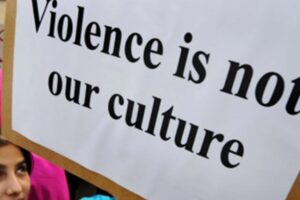Newspaper Article 22/03/2018
In today’s globalised world, a new way of life has emerged in which distances have been reduced and interactions have become brisker and livelier in the wake of geographical access and broadband interconnectivity. The transnational world has also brought in new forms of vulnerabilities and insecurities. The use of media, in particular, has in a way eased the job of extremist factions; through the internet a large number of people can be reached.
Former US president Barack Obama’s prescription of how ideologies could not be defeated by guns but by ideas is particularly astute. In an era of information technology, the soft approach needs to be employed not only to counter the hatred spread by extremist mindsets but also to promote a balanced ideological outlook.
Pakistan has been battling militancy for more than a decade, and since then a number of counterterrorism operations have been conducted. For the most part, terrorism has limited the entertainment activities in the country; concerts, industrial exhibitions and Lok Virsa events are still organised but these are fewer than in the past. Terrorism has changed our way of life. The National Action Plan (NAP) introduced by the government has put a ban on hate speech and extremist material (reference point 5 NAP). The strategy has also prohibited the glorification of extremists on media (point 11).
Besides, there is also a provision to take action against those who lure young people towards extremism through social media (point 14). Much emphasis has been placed on the media. Can media be an effective tool in deterring extremist ideology? The projection of violent acts could attract a wider audience but it also has the tendency to instigate violence. The media, instead, should project positive narratives like the examples of young people facing the challenges courageously. The media also needs to expose the lies and destructive consequences that the extremist ideologies reinforce. The argument that Muslims are allowed to use violent means can be countered by religious teachings. The Quran is explicit about the killing of a human, equating it with the murder of all humanity. And whoever saves a person, it is as if he has saved all of mankind.
Our religion prohibits the targeting of the civilian population and the use of violence. The lectures and talk shows of religious scholars highlighting the true essence of Islam could be useful in creating harmony between the various sects as well as in promoting interfaith peace and understanding. However, the communication gap could be an impediment to reaching out to a larger audience. Therefore, religious scholars need to be integrated into modern technological platforms and online social networking sites. Deradicalisation seminars and lectures on Youtube and Facebook should also be shared.
Meanwhile, the role of “Sufism” in the spread of Islam in the subcontinent is a testament to the fact that there is no room for violence in religion. Traditional and “Sufi devotional music” Qawwali needs to be promoted. It is a known fact that culture and literature have been pivotal in creating (or destroying) societies. For instance, Allama Iqbal’s poetry was a motivating factor for the Muslims of the subcontinent.
Dramas and movies on subjects relevant to social issues can be helpful in the building of a balanced perspective. Often films indicate how young minds can be misguided or corrupted. That is why we need to counter these possibilities. To conclude, since everyone has suffered due to terrorism, to ensure an effective implementation of NAP, our state institutions need to enlist the help of different segments of society, including teachers, parents, sportsmen and the youth.
Published in Express Tribune dated March 21, 2018
{Disclaimer: The views expressed in the article are of the author and do not necessarily reflect the policy of Institute}

